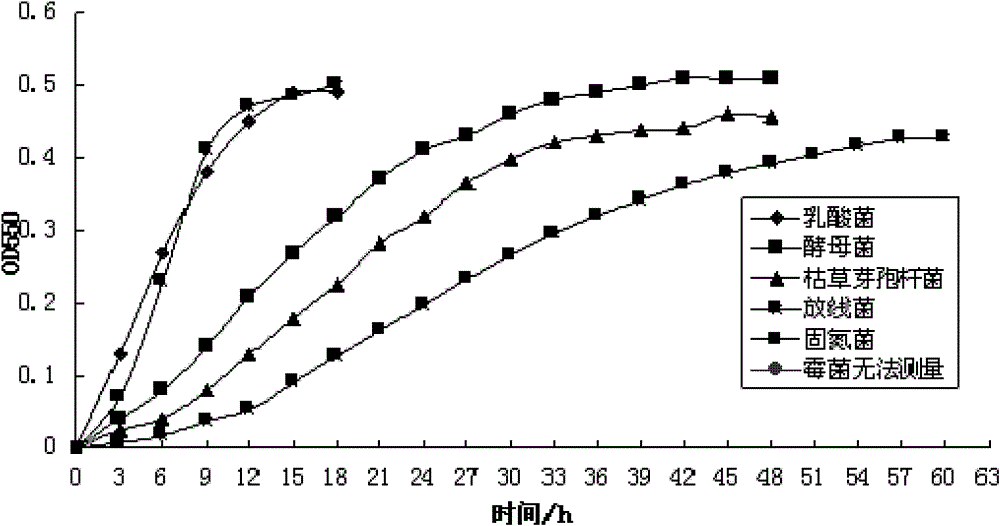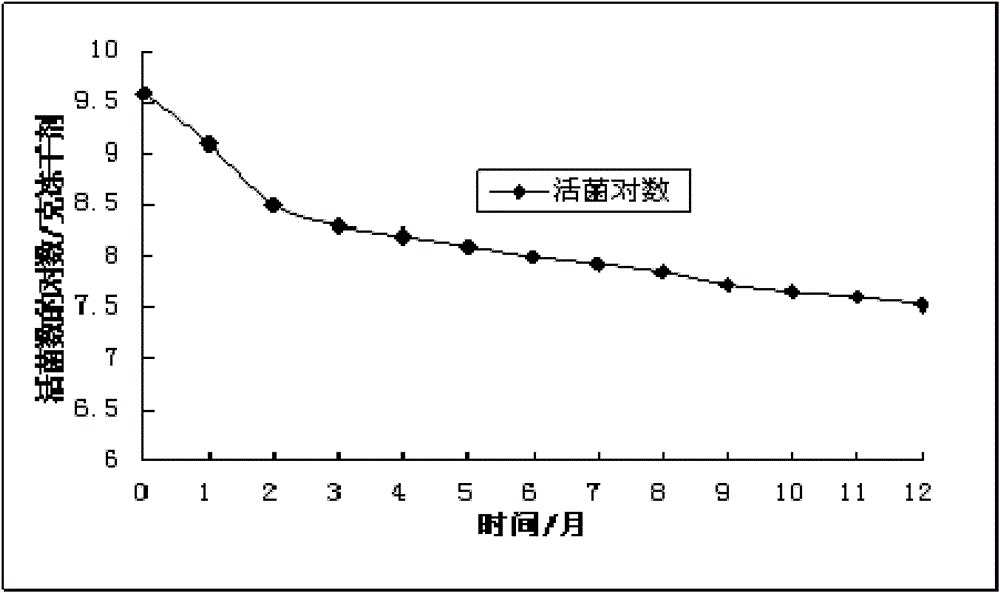Straw micro-stage additive and preparation method thereof
An additive and straw technology, applied in the field of microorganisms, can solve problems such as traffic accidents that affect air quality, affect crop growth, reduce soil fertility, etc., achieve the effects of improving the internal and external environment of animals, solving the imbalance of organism flora, and having a wide range of uses
- Summary
- Abstract
- Description
- Claims
- Application Information
AI Technical Summary
Problems solved by technology
Method used
Image
Examples
Embodiment Construction
[0046] 1. Materials:
[0047]SW-CJ-1CU ultra-clean workbench, domestic; YXQ-LS-50SI vertical pressure steam sterilizer, domestic; FD-1A-50 freeze dryer, domestic; BIOF-6050A50L mechanical stirring stainless steel intelligent fermentation tank , domestic; TGL low-temperature refrigerated centrifuge, domestic; L2800 microscope, domestic; UVD-3500 ultraviolet spectrophotometer, American Labomed; 3000B electronic balance, American; strains: Saccharomyces cerevisiae, Bacillus subtilis, lactic acid bacteria, Cytobacteria, nitrogen-fixing bacteria, and molds are preserved in the Pharmaceutical Laboratory of the School of Pharmacy and Bioengineering, Chongqing University of Technology.
[0048] 2. Method:
[0049] 2.1 Strain activation:
[0050] Put the preserved brewer's yeast, lactic acid bacteria, Bacillus subtilis, actinomycetes, nitrogen-fixing bacteria, and mold strains into sterilized 1% sugar water to activate for 2 hours, and then transfer them into sterilized bean sprouts ...
PUM
 Login to View More
Login to View More Abstract
Description
Claims
Application Information
 Login to View More
Login to View More - R&D
- Intellectual Property
- Life Sciences
- Materials
- Tech Scout
- Unparalleled Data Quality
- Higher Quality Content
- 60% Fewer Hallucinations
Browse by: Latest US Patents, China's latest patents, Technical Efficacy Thesaurus, Application Domain, Technology Topic, Popular Technical Reports.
© 2025 PatSnap. All rights reserved.Legal|Privacy policy|Modern Slavery Act Transparency Statement|Sitemap|About US| Contact US: help@patsnap.com



